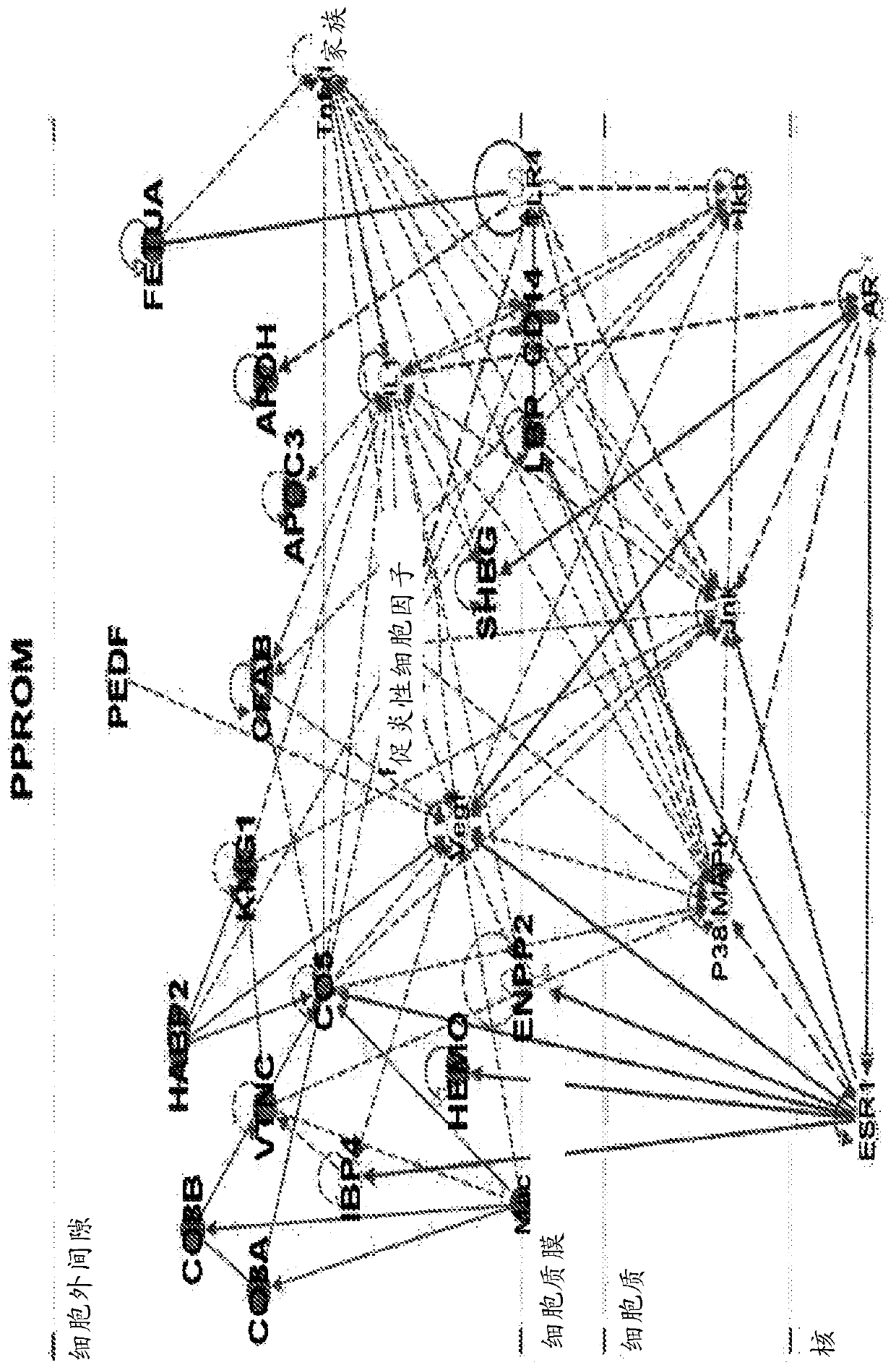Biomarkers for predicting preterm birth due to preterm premature rupture of membranes versus idiopathic spontaneous labor
A technology for biomarkers and premature rupture of membranes, applied in biological testing, biomaterial analysis, biochemical equipment and methods, etc., can solve problems that have not led to clinically useful tests
- Summary
- Abstract
- Description
- Claims
- Application Information
AI Technical Summary
Problems solved by technology
Method used
Image
Examples
Embodiment 1
[0134] Example 1. PPROM and PTL phenotypes are characterized by differences in underlying biochemical pathways
[0135] Target:
[0136] To examine potential biological pathways of maternal biomarkers associated with preterm birth (PTB) due to preterm premature rupture of membranes (PPROM) versus idiopathic spontaneous labor (PTL)
[0137] Research design:
[0138] A second nested case-control analysis of the proteomic evaluation of the preterm birth risk study. We analyzed clinical characteristics and samples from prospective collections from 195 subjects (39 PTB Pathway analysis categorized proteins differentially expressed in PPROM or PTL versus term (AUC > 0.64 and p-value < 0.05) or in PPROM versus PTL.
[0139] method
[0140] Second Analysis of the Proteomic Evaluation of the Preterm Birth Risk Study (Clinicaltrials.gov Identifier: NCT01371019)
[0141] Anticipated serum collections at 191 / 7-206 / 7 weeks of pregnancy: 39 SPTB < 37 weeks: 17 PPROM and 22 PTL, 156 mat...
Embodiment 2
[0161] Example 2. Further studies on PPROM and PTL phenotypes
[0162] The study of Example 1 was repeated with a large number of analytes and for different data subsets based on gestational age. In addition to univariate analysis, this example includes the evaluation of two-analyte reversal (up-regulated protein / down-regulated protein) for PPROM versus term, PTL versus term, and PPROM versus PTL. Finally, pairs of reversals were evaluated for predicting overall preterm birth by combining high-performing PPROM-versus-term reversals with high-performing PTL-versus-term reversals, and using the combination of highly selective reversals for each phenotype to use To distinguish PPROM from PTL.
[0163] Research design:
[0164] A second nested case-control analysis of the proteomic evaluation of the preterm birth risk study. We analyzed clinical characteristics and maternal serum from samples collected prospectively at 119-153 days of gestation. Using the entire cohort (119-15...
PUM
 Login to View More
Login to View More Abstract
Description
Claims
Application Information
 Login to View More
Login to View More - R&D
- Intellectual Property
- Life Sciences
- Materials
- Tech Scout
- Unparalleled Data Quality
- Higher Quality Content
- 60% Fewer Hallucinations
Browse by: Latest US Patents, China's latest patents, Technical Efficacy Thesaurus, Application Domain, Technology Topic, Popular Technical Reports.
© 2025 PatSnap. All rights reserved.Legal|Privacy policy|Modern Slavery Act Transparency Statement|Sitemap|About US| Contact US: help@patsnap.com



